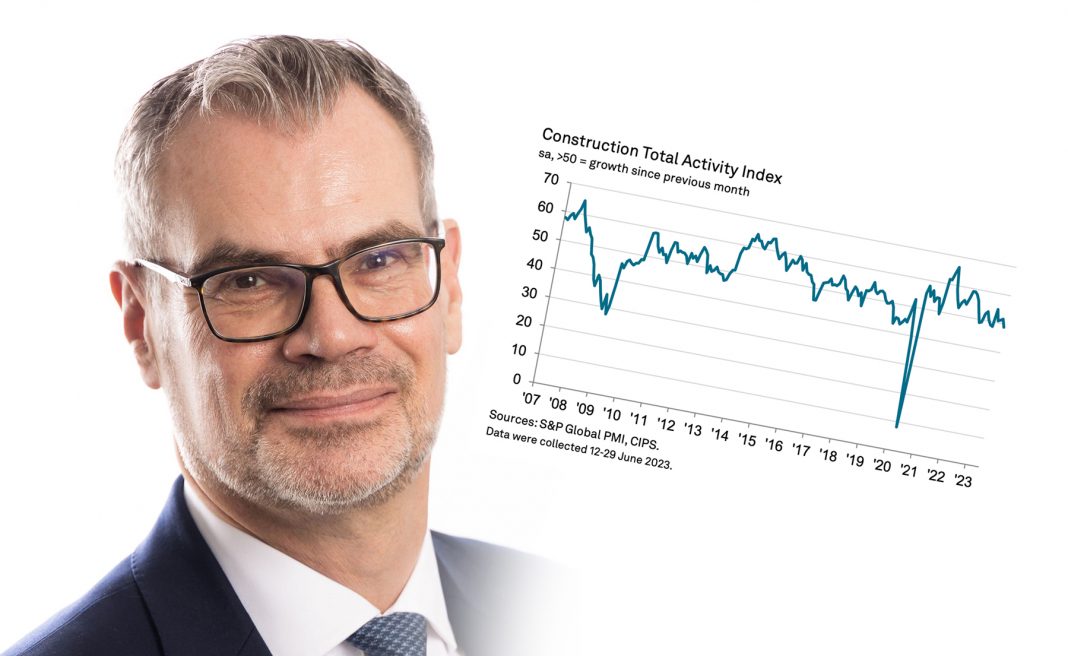Rising borrowing costs put further pressure on residential construction, giving the fastest decline since Covid-hit 2020, leading to further calls for the government to give a clear commitment to building more homes.
FMB chief executive Brian Berry said: “At a time when we need to be building more homes we are moving in the opposite direction and building fewer. There is a whole generation of people who can’t get on the housing ladder, which is holding back growth and investment. While it might be politically easy to shelve housing commitments to gain votes in some areas, the Government must recommit to their annual housing target of 300,000 homes.
“I’m concerned that the Government lacks a clear plan to solve the housing crisis, resulting in overcrowding and increasingly unaffordable rents as more cling on to rental properties as the new housing market shrinks. While there are long term issues to solve with the planning system, the Government needs to take the bull by the horns and restate its ambition to build new homes.”
There is also good news in the figures, from S&P Global, which also reports that softening demand and fewer supply bottlenecks led to the sharpest reduction in delivery times for 14 years but this also triggered the first outright decline in purchasing prices for nearly as long.
Tim Moore, economics director at S&P Global Market Intelligence, said: “Weaker housing market conditions in the wake of higher borrowing costs acted as a major constraint on UK construction output in June. Total industry activity declined for the first time in five months due to the steepest downturn in residential work since May 2020. Aside from the lockdown-related fall in house building, the rate of decline was the fastest for just over 14 years. Survey respondents widely commented on cutbacks to new residential building projects and more caution among clients in response to rising interest rates.
“Solid rates of output growth in the commercial and civil engineering segments helped to offset some of the weakness in residential construction. Higher levels of business activity were attributed to resilient demand for refurbishment projects in the commercial construction sector and robust infrastructure workloads.
“Construction companies experienced an outright decline in their purchasing prices during June, which contrasted with the rapid rates of cost inflation seen over the past three years. Anecdotal evidence suggested that more competitive market conditions and improved materials availability had helped to bring down inflationary pressures. Supply constraints continued to ease in the latest survey period, as signalled by the fastest improvement in delivery times for construction inputs since July 2009.”
Dr John Glen, Chief Economist at the Chartered Institute of Procurement & Supply (CIPS), said: “The construction sector became rooted in contraction territory in June as interest rate rises and squeezed affordability rates impacted on residential building output which fell to its greatest extent since 2009 outside the pandemic years.
“Fewer houses being built meant the sector was dragged down overall because civil engineering and commercial building projects remained relatively buoyant with stronger pipelines of work. Delivery times for building materials were also the most improved since 2009. Input price inflation fell blow the no-change mark, meaning raw materials became less expensive and were more widely available for construction companies.
“Looking ahead, there were few reasons to be cheerful as optimism fell to its lowest since January. A large blot on the landscape was the fall in employment growth. With interest rates at the highest for 15 years and inflation four times over the Bank of England target, the sudden reduction in construction sector hiring is one of the red flags facing the UK economy at the moment.”












